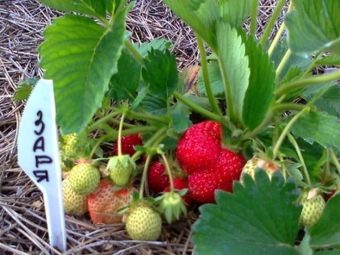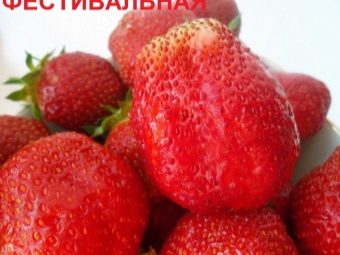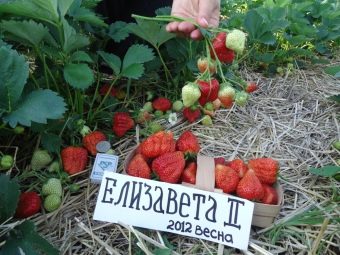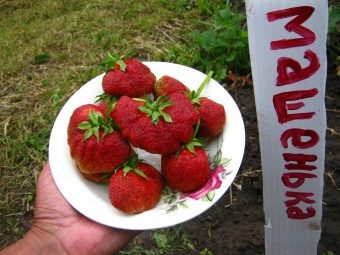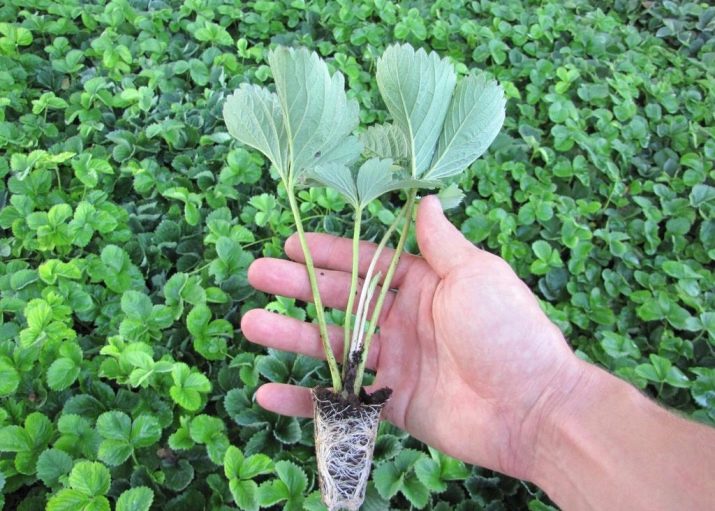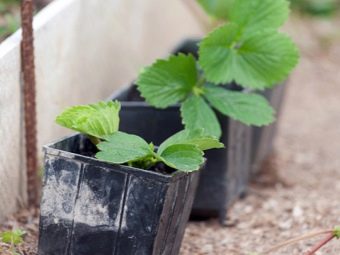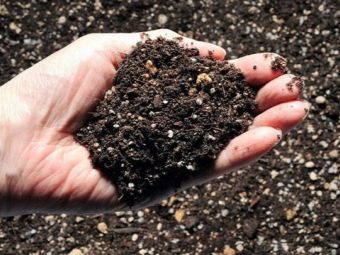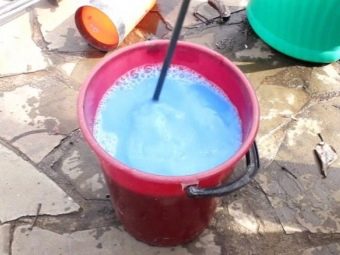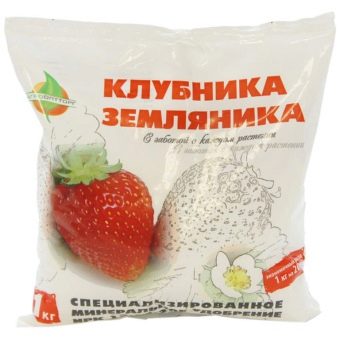How to increase the yield of strawberries in the open field?
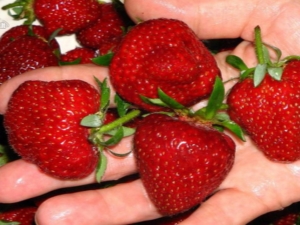
The problem of increasing yields worries many owners of strawberry plantations.However, no matter how high yields a particular variety yields, over time its yield begins to decline, and the berries become noticeably smaller and uglier. Therefore, the question of how not to lose in the quality and quantity of fruits is quite relevant.
Conditions for obtaining a good harvest
Important conditions for increasing the yield of strawberries growing in the open field are strict adherence to the rules of agricultural engineering, competent selection of seedlings, the introduction of the necessary fertilizers and pest control. However, none of these factors will have an effect without complying with the other three. Being engaged in the cultivation of strawberries need to know that the plants are aging quickly enough and need regular updating.
On average, each bush is able to fully bear fruit for five years., after which there is a noticeable decline in yield and the plant requires replacement. In order to ensure continuous rejuvenation of the plantation, it is necessary to engage in planting new rows every year, and to remove old ones. The period of active fruiting of plants depends entirely on the variety and in long-lived varieties it can be six, and even seven years.
Variety selection
Before you buy strawberry seedlings, you should decide on the variety, and the main selection criterion is the climate. This is due to the fact that each variety has its own aging time, on which it depends, whether the plant will have time to give a good harvest before the onset of cold weather. Thus, for regions with a sharply continental climate, early-maturing varieties should be chosen, for example, “Asia”, “Florina”, “Tsaritsa” or “Honey”. For cultivation in the middle lane, you can choose "Sonata", "Roxana", "Lord", and for the southern regions is quite suitable for any late-ripening variety.
But to grow one variety is impractical. Experts recommend planting at least six varieties, and observe which one will yield the greatest yield. When growing strawberries in the central and southern regions, it is better to plant a pair of early, middle and late-ripening varieties. As a result, the plants will continuously bear fruit one after the other from June to September, and provide the owners with a rich harvest. Residents of temperate latitudes, except for early ripe varieties, can be planted and remontant species. Such plants are capable of producing several harvests per season, which also has a beneficial effect on the total amount of the crop.
In addition to yield indicators, the ability of a variety to resist diseases, as well as its taste, should be considered. It often happens that the plant is able to produce a good harvest, but is vulnerable to fungal or infectious diseases. This can lead to the fact that with an accidental infection, you can be left without a crop at all.
Therefore, when choosing a variety, it is necessary to take into account all the properties of the plant, and only then decide on the choice. Zarya, Festivalnaya, Elizaveta, Elvira and Masha are considered the most productive varieties.
Buying seedlings
Strawberry Plantation requires regular updates. It is recommended to acquire seedlings in professional nurseries selling certified plants and guaranteeing their high quality. Such shoots are carefully selected and pre-treated for infections and rot. When choosing young plants, it is necessary to pay attention to their appearance. In healthy and strong shoots, the size of the root collar should not be less than 0.6 cm.
It is believed that the greater this figure, the higher the yield of the bush. Plant color can also tell a lot about the condition of the shoot. The leaves of healthy seedlings have a saturated green color and a homogeneous, without spots and dried edges, leaf blade. The presence of dark spots indicates the defeat of the escape of a fungal disease, so you should not buy such seedlings.The paleness of the leaves may indicate the presence of phytorphoric necrosis, and the wrinkled and incomplete unfolding of the leaf plates indicate the presence of a strawberry mite.
Soil preparation
The amount of the crop depends on how well the planting was carried out. Strawberries love "airy" soil, with an optimal level of humidity and a large supply of nutrients. Culture abundantly bears fruit on chernozems and well-fertilized grounds, while a noticeable decrease in yield is observed on clay and heavy soils. In addition, when the groundwater is close to bedding, strawberry beds should be raised 30-40 cm above ground level.
The optimal period for finding strawberries in one area is 3 years. During this period, the soil is depleted and accumulates pathogens. After this period, the plants are transplanted and can return to their original place no earlier than after 6 years. You can not plant strawberries after potatoes and tomatoes. The optimum place will be a plot with specially planted sideratami, in which you can use peas, mustard, lettuce, dill and parsley. These plants are planted in early spring, and immediately after the start of flowering they are dug up along with the soil to a depth of 40 cm. The resulting substrate enriches the depleted soil and helps to significantly increase the amount of crop.
When loamy soils, it is recommended to make a bucket of humus and the same amount of peat per square meter. Sandy soils must be diluted in the same way, adding turf to the peat and humus. However, in order to increase the yield, the preparation of land should be dealt with in the fall. For this, a mixture of 50 g nitrophoska, 400 g dolomite flour and 200 g ash per 1 m2 is introduced into the soil. When applying fertilizers, it should be remembered that the abundance of lime preparations has a bad effect on yield, and chlorine-containing additives are completely harmful for strawberries.
In addition, it is necessary to remove all weeds from the soil, as well as the larvae of the wireworm and the worst enemy of the leafy plants - the May beetle.
Landing
Planting strawberries can be carried out both in spring and autumn. At spring planting, the first crop appears only the next year. However, when buying seedlings in a nursery, the problem of getting fruits in the coming summer is safely resolved. The plants already have well developed roots and are picking up color. When autumn planting, which is carried out in the period from late August to early September, the fruits appear as early as next year.
The only condition for a good survival of the shoots, and as a result, a rich harvest, is the presence of snow cover not less than 20 cm thick. With such a cover, the roots tolerate frosts of up to 30 degrees and the plant starts to bear fruit without any problems.
Before planting seedlings need to dilute 1.5 tbsp. spoons of salt and 0.5 tsp of copper sulfate in 5 liters of water, immerse the roots of the shoots in the resulting solution and leave for 10 minutes. This will help avoid plant infection and improve their growth and development.
Care rules
Strawberry care includes feeding, watering, mulching and pest control.
- Top dressing is done four times per season. In the spring, bring mullein or bird droppings, diluted with water in proportions of 1: 10 and 1: 20, respectively. Fertilizer is applied in the root way: it is necessary to pour 1 liter of the mixture under each bush. The second time the plants are fed during flowering. For this purpose, complex fertilizers containing phosphorus are introduced into the soil. Good results are obtained by spraying the bushes with a solution of potassium sulfate, for the preparation of which 1-2 g of the substance is diluted in 10 liters of water. In late August, the bushes are treated with urea, taken in the ratio of 3g / 10 l of water. This contributes to the formation of buds, the number of which depends on the strawberry yield for the next year. For the fourth time, fertilizers are applied after the last harvest, and as a bait, we use mullein or bird droppings.
- Strawberries are watered 2 times a week.using drip or basal ways. Mulching is carried out using mowed grass, sawdust or straw. It is also necessary to regularly mow high grass around the plantations and remove excess whiskers.
- An important condition for obtaining a rich harvest is the fight against diseases and pests. For this, in early spring, each bush is treated with a biostimulant, and after another 14 days with a “Summer Resident”. Until flowering plants use a special material that covers the bushes, thereby limiting the access of pests. And further use of phytoncides with the smell of calendula, onion and garlic.
To increase the yield of strawberries growing in the open field, even for novice gardeners. Patience and strict observance of the necessary rules will make the care of the plant competent and professional, and help grow a rich harvest.
How to increase the yield of strawberries, see below.


